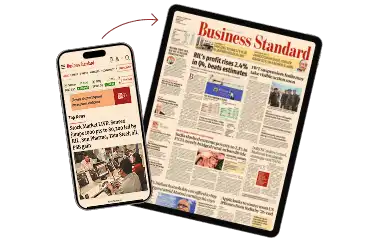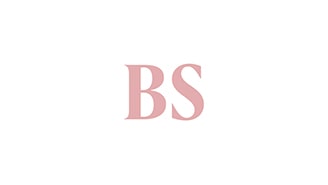The global outlook is looking increasingly stagflationary in the near term. An unrelenting array of adverse supply shocks — from manufacturing supply chains to commodity and labour markets — have simultaneously caused activity to slow and prices to rage around the world. The US has already registered two quarters of negative growth, and while this may not be characterised as a recession just as yet, given the strength of the labour market, the writing is clearly on the wall, particularly in Europe hit by a new natural gas shock. What’s more worrying is the Fed will have to keep hiking into a slowdown, to tame still-elevated inflation pressures. Commodity prices, despite their recent correction, are still almost 25 per cent higher than at the start of 2022 but more importantly, developed market labour markets are the tightest in decades, engendering the real prospect of a wage-price spiral. Markets therefore expect another 100 bps of Fed hikes this year — on the back of the 225 bps already delivered — and for the ECB to move another 50 bps in September. But slowing growth, elevated inflation and tighter monetary conditions are not the only challenges. The US dollar has strengthened almost 11 per cent this year, putting significant pressure on emerging market currencies. And there’s unlikely to be any relief on this front. The dollar has typically strengthened in global recessions, especially if the Fed is unable to cut rates anytime soon.
All this creates an unenviable backdrop for emerging markets whose cyclical positions are very different from their developed market counterparts, and who don’t benefit from reserve currencies and exorbitant privilege, and where inflation expectations aren’t always as anchored. In particular, emerging market policymakers must confront at least three dilemmas:
The first is that of protecting growth versus compressing imbalances. Before the Ukraine-Russia war, the cyclical positions in developed and emerging markets were very different. The former were almost back on their pre-pandemic paths; the latter discernably below. In the wake of high inflation, therefore, the intellectual consensus in the former was clear: to focus overwhelmingly on disinflating. Waters get more muddied in emerging markets where recoveries from the pandemic remain more incomplete. In India’s case if GDP grows at 7 per cent in FY23, the level of GDP will still be about 6-7 per cent below its pre-pandemic trend, as is the case for several other emerging economies.
Yet, inflation remains above the RBI’s 6 per cent upper tolerance band and, with the trade deficit still very elevated, the current account is likely to widen past 3 per cent of GDP this year. To be clear, there is no threat of a 2013-like event. The RBI is armed with a war chest of FX reserves, which provide significant buffers to shocks. Instead, the dilemma is whether the relative policy focus should be on protecting growth or compressing imbalances? Demand compression will help reduce imbalances but can exacerbate an incomplete recovery. Yet, living with imbalances risks a hardening of inflation expectations and a constant drip-feed of FX reserve losses, both of which can create their own uncertainties. Hence the dilemma.
A second dilemma relates to the extent to which the rupee should be used as a shock absorber. When hit by a persistent negative terms-of-trade shock, the underlying equilibrium exchange rate is expected to weaken, inducing the needed expenditure switching (higher exports, lower imports) to narrow the current account deficit to more sustainable levels. But a weaker rupee will also pass through into domestic prices, pressurising inflation and increasing the monetary policy challenge. Hence the dilemma.
A third dilemma is how to use the fiscal to simultaneously support growth and stability. After the pandemic, private consumption and private investment are understandably taking time to recover. Exports provided important tailwinds last year but can be expected to wane amidst a global slowdown. The upshot: the onus on public investment to drive growth and job creation has only become more urgent. The central government has correctly doubled down on capex — up almost 1 per cent of GDP over three years. Simultaneously, however, the subsidy bill has increased in response to surging commodity prices. Meanwhile, preserving macro stability in a hostile global environment necessitates a continued reduction of India’s elevated consolidated fiscal deficit. How then can the fiscal simultaneously reduce the deficit, accommodate higher subsidies and double down on capex? Hence the dilemma.
Resolution of these dilemmas will necessitate judicious policy assignment. The objective of macro policy must be to progressively bring inflation down toward its medium-term target and rein in the current account deficit to sustainable levels, and yet do so in a manner that minimises the hit to growth.
Three objectives, however, require three instruments (fiscal, monetary, exchange rate) — as Jan Tinbergen, the first Nobel Laureate in Economics, demonstrated — and, while these instruments are not orthogonal (their impact will spill over into each other) the key will be to assign each instrument towards accomplishing a broader goal.
The exchange rate can and should be used towards equilibrating external imbalances. There is now sufficient empirical evidence in India that a weaker trade-weighted-real-effective-exchange-rate (REER) will help narrow the current account over time, by boosting exports and reducing discretionary imports. A weaker rupee can therefore simultaneously help external imbalances and boost growth. Much has been made of the rupee’s slide in recent months but, in a world where the US dollar has strengthened by almost 11 per cent in 2022, rupee depreciation of 6 per cent, in fact, makes it among the better performing emerging market currencies this year. In fact, the REER has been flat since the start of the year, despite sustained adverse terms of trade shock. If this persists, the need of the economy will be more calibrated rupee depreciation, not appreciation.
Even as the rupee is deployed towards helping external balances, monetary policy will need to continue focusing on achieving internal balance. The RBI has correctly pivoted sharply from April to combat inflation. But monetary conditions still remain relatively accommodative and inflationary expectations — notwithstanding their recent stabilisation — have hardened over the last two years, suggesting more will have to be done. A hardening of expectations risks worsening the future growth-inflation trade-off and with inflation expectations typically adaptive, the sooner the RBI can help dis-inflate, the greater the ameliorative impact on expectations and the more favourable the activity-price trade-off for the future.
On its part, fiscal policy faces a fine balancing act between growth and stability. Deficits will need to be brought down, not least to help with narrowing the current account deficit. Meanwhile, pressure on the expenditure side keeps mounting. Interest payments have increased sharply in the wake of higher public debt, capex will need to lead growth in the near term, and health and education spending will have to be upped in the medium term. How can policymakers square this fiscal circle? Tactically, we may have no choice but to cut back on expenditures with lower multipliers in the near term. But strategically, apart from better targeting subsidies, the focus will eventually have to be on revenue mobilization, with India’s consolidated tax/GDP ratio essentially stagnant for the last 15 years.
A stagflationary global environment makes policy calibration particularly challenging. The key will be judicious policy assignment. The rupee should be used to compress external imbalances, aided secondarily by normalizing fiscal and monetary policy. Monetary policy should focus on dis-inflating as soon as possible, so that expectations don’t harden further. And growth should receive a helping hand from high-multiplier public capex, the expansionary effects of a weaker rupee and a preservation of macro stability. This will require an extraordinary balancing act. But then these are not ordinary times.
Sajjid Z Chinoy is chief India economist at JP Morgan












